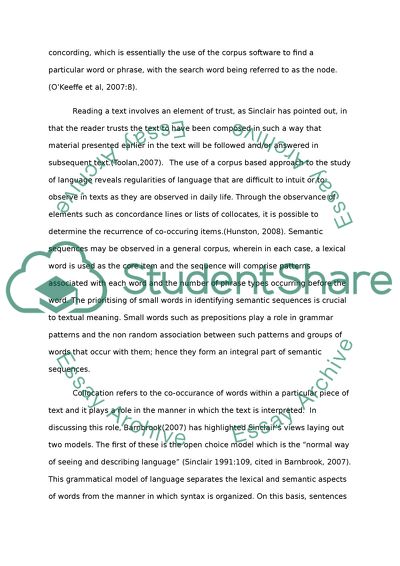Cite this document
(The Use of Learner Corpora in Teaching Foreign Languages: Source of Literature review, n.d.)
The Use of Learner Corpora in Teaching Foreign Languages: Source of Literature review. Retrieved from https://studentshare.org/education/1721537-a-literature-review-of-corpus-linguistics-from-2007-to-2009
The Use of Learner Corpora in Teaching Foreign Languages: Source of Literature review. Retrieved from https://studentshare.org/education/1721537-a-literature-review-of-corpus-linguistics-from-2007-to-2009
(The Use of Learner Corpora in Teaching Foreign Languages: Source of Literature Review)
The Use of Learner Corpora in Teaching Foreign Languages: Source of Literature Review. https://studentshare.org/education/1721537-a-literature-review-of-corpus-linguistics-from-2007-to-2009.
The Use of Learner Corpora in Teaching Foreign Languages: Source of Literature Review. https://studentshare.org/education/1721537-a-literature-review-of-corpus-linguistics-from-2007-to-2009.
“The Use of Learner Corpora in Teaching Foreign Languages: Source of Literature Review”, n.d. https://studentshare.org/education/1721537-a-literature-review-of-corpus-linguistics-from-2007-to-2009.


